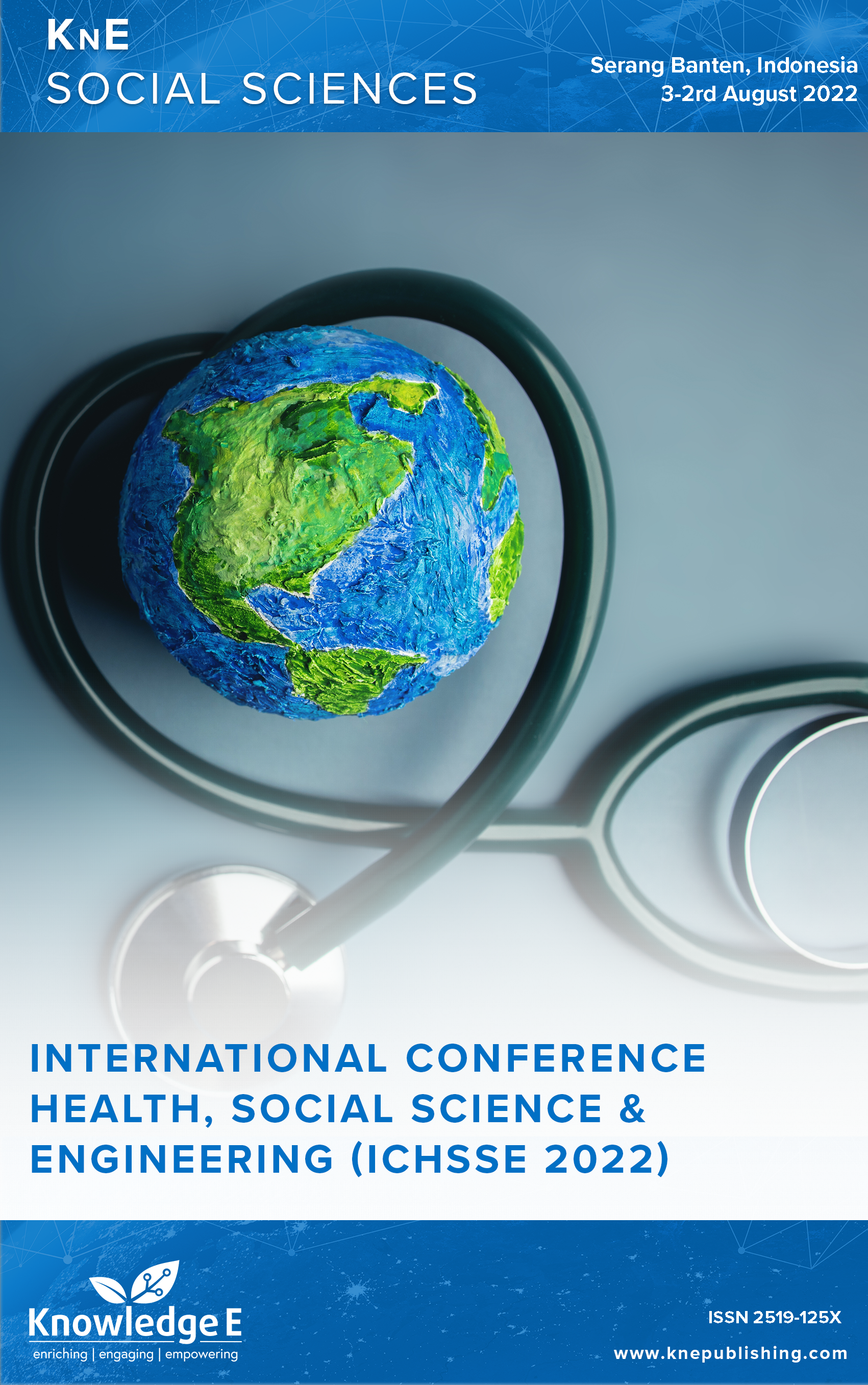Behavioral and Environmental Risk Factors Related to Stunting Incidents in Toddlers
DOI:
https://doi.org/10.18502/kss.v8i14.13856Abstract
Stunting is a growth disorder or condition of failure to thrive in children due to lack of nutrition and repeated infections in the first 1000 days of life, causing the child to be shorter than his age. This study aims to determine the risk factors associated with stunting in toddlers in Pulo Ampel District in 2021. This study uses an observational study with approach case control. The instruments used are questionnaires and observation sheets. Sample in this study consisted of 72 case and 72 control by using purposive sampling technique. From the results of the univariate test in the stunting toddler group, it was found that the knowledge of mothers was not good (90,3%), low economic status (98,6%), the availability of clean water facilities that did not meet the requirements (8,3%), latrines were not available (13,9%), and poor feeding patterns (76,4%). Statistical test using Chi Square, obtained the results of mother’s knowledge (Pv = 0,000), economic status (Pv = 0,000), availability of clean water facilities (Pv = 0,012), availability of latrines (Pv=0,003), and feeding patterns (Pv = 0,000) has a significant relationship with the incidence of stunting in toddlers. Suggestions from this research are expected for the Puskesmas to provide counseling with video media and booklets about stunting and nutritious eating for toddlers.
Keywords: stunting, clean water, toilet, toddlers
References
[2] WHO. Malnutrition: Regional and country status. SELL J. 2020;5(1):55.
[3] Sutarto RI. Adilla Dwi Nur Yadika. Jurnal Kesehatan Masyarakat Indonesia. 2019;14(November):4–9.
[4] UNICEF. Child survival and development | UNICEF Timor-Leste. UNICEF; 2019.
[5] Asian Development Bank (ABD). “Indonesia’s toddler stunting prevalence is the 2nd Highest in Southeast Asia.” databoks.katadata, Nov. 2021.
[1] Rahayu DT. Anemia In Pregnancy With Stunting In Gayam Village DISTRICT GURAH KEDIRI. 2021;7(81). https://doi.org/10.21070/midwiferia.v
[2] WHO. Malnutrition: Regional and country status. SELL J. 2020;5(1):55.
[3] Sutarto RI. Adilla Dwi Nur Yadika. Jurnal Kesehatan Masyarakat Indonesia. 2019;14(November):4–9.
[4] UNICEF. Child survival and development | UNICEF Timor-Leste. UNICEF; 2019.
[5] Asian Development Bank (ABD). “Indonesia’s toddler stunting prevalence is the 2nd Highest in Southeast Asia.” databoks.katadata, Nov. 2021.
[6] Izah N, Qudriani M, Furqoni L. The influence of happy toddler classes on improving nutritional status in undernourished. Poor and Stunted Toddlers. 2022;7(4):368–373.
[7] Ilmi Khoiriyah H, Dewi Pertiwi F, Noor Prastia T. Factors associated with stunting incidents in toddlers aged 24-59 months in Bantargadung Village, Sukabumi Regency in 2019. Promotor. 2021;4(2):145.
[8] Riskesdas T. “2018 Riskesdas National Report.” Balitbangkes. 2018;10:126.
[9] Khairani N, Effendi SU. “Children’s characteristics, exclusive breastfeeding and existence of smokers with stunting incidence in children under five.” AcTion Aceh Nutr J. 2022;7(1):15.
[10] Notoatmodjo S. Promosi Kesehatan dan Ilmu Perilaku. 2007.
[11] Kurnia M, Ratu D, Picauly I, Landi S. “Relationships mother’s knowledge about nutrition, history of infection and personal hygiene disease with pregnant women consumption patterns in stunting locations North Central Timor District.” J PAZIH_Pergizi Pangan DPD NTT. 2018;1070–1080.
[12] Ma GP. Asweros Umbu Zogara, “Factors Associated with Stunting in Toddlers”. J Ilmu Kesehat. 2019;14(01):93–112.
[13] Megantari SH, Abbas HH, Ikhtiar M. “Determine the characteristics of the determinants of stunting in children aged 24-59 months in the slum area of Bontoala District, Makassar City.” Wind Public Heal J. 2020 Nov;207–219. https://doi.org/10.33096/woph.v1i3.127
[14] Agustin L, Rahmawati D, Jayanti YD. “Analysis of food diversity consumption in stunting toddlers.” 3 rd Jt Int Conf. 2021;3(1):401–404.
[15] Sasmita H, Sapriana S, Bernike Magdalena Sitorus S. The relationship of utilization of sanitation facilities to stunting incidents in 2021. Poltekita J Ilmu Kesehat. 2022;16(1):8–15.
[16] Vina Adriany MT. “Unpacking the discourses of stunting in Indonesian early childhood education and parenting.” Child Soc Natl Child Bur. 2022.
[17] Kemenkes, Indonesian Health Profile 2018. 2018th ed. 2018.
[18] Parenreng KM. “Determinants of stunting in children aged 6-23 months in locus and non locus area in East Luwu District.” 2020.
[19] Siagian D, Amin S. “Relationship between diet and exclusive breast milk with the incidence of stunting in toddlers aged 24-59 months at Posyandu area of Puskesmas Teluk in year 2020.” 2021;7(2):1–6.

